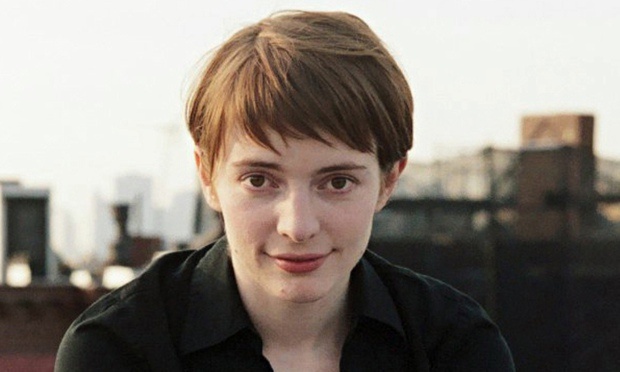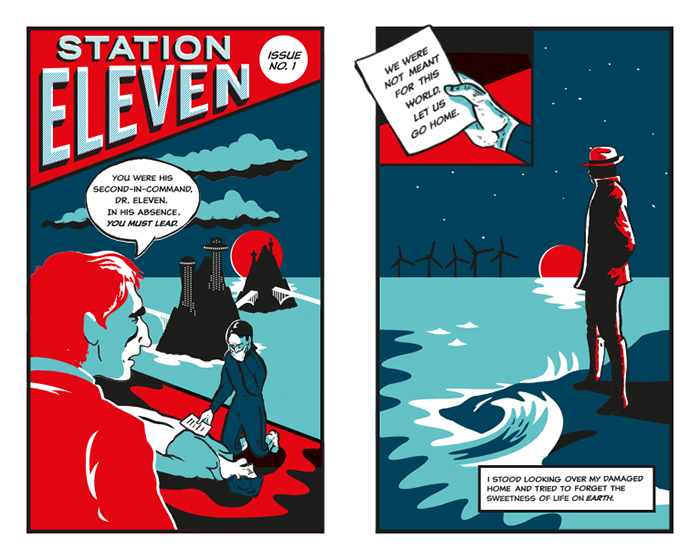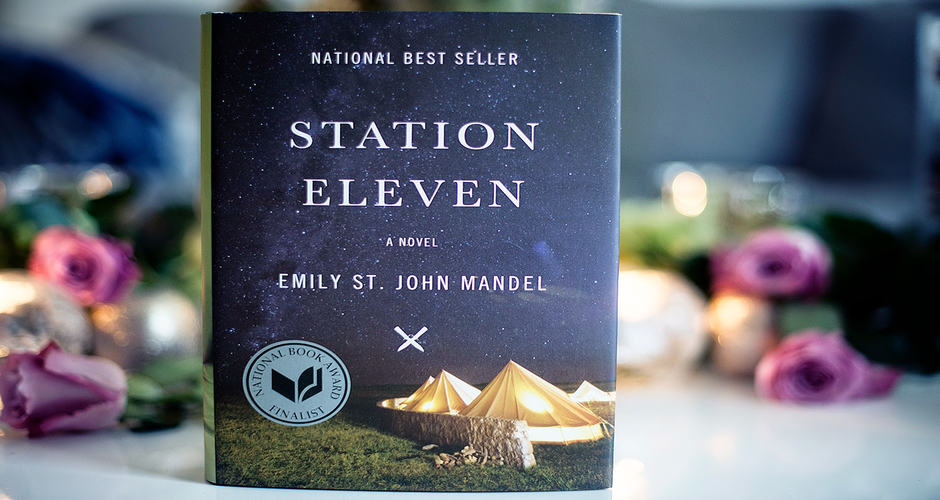Post-apocalyptic stories are a dime a dozen these days. They’re so damn prevalent that whenever I recommend one to somebody they almost always groan. I usually try to sneak that part in at the end of my pitch. We’re just tired of them and most of us find The Walking Dead to be more than enough to satisfy our meager post-apocalyptic fix. That’s a bit of a shame though because, as most of us know, it’s not what a story is about that makes it worthwhile but how it is about it. Still, I understand people’s reluctance to go through yet another story set in a deserted wasteland so here’s how I would pitch the novel Station Eleven: “It’s a book about a group of traveling Shakespearean actors and musicians struggling to provide entertainment and enlightenment in a world that is no longer interested. It also explores the culture of celebrity by providing a glimpse into the life of a famous actor and his ex-wives. It jumps back and forth between time periods, shifting the focus to different characters and uses third person narration along with newspaper interviews and handwritten letters to tell its story. And…much of it takes place in a post-apocalyptic world.” Bet I had you up until that last sentence. Well, if you remain unconvinced, let me see if can provide a little more detail to persuade you that this novel is a must-read.
The story begins in Canada on a snowy night. Renowned Hollywood actor Arthur Leander is about to take the stage as the title role in a production of King Lear. Former paparazzo turned paramedic Jeevan Chaudhary is in the audience with his girlfriend. Sharing the stage with Arthur is a little girl named Kirsten Raymode. She plays a ghostly vision of one of Lear’s daughters–it’s an experimental production–and is horrified when Arthur suddenly drops to the floor. Jeevan rushes onto the stage and performs CPR but it’s too late. Arthur is dead of a heart attack within minutes. Kirsten is ushered offstage by her handler and Jeevan walks home in the snow. As he walks, he receives news from a doctor friend that a plague is spreading at an alarming rate. Jeevan rushes to a local store, buys as many supplies as he can and holes himself up in his brother’s apartment as the world falls apart.
Jump forward twenty years and Kirsten is now a member of The Symphony, a wandering band of actors and musicians who ply their trade in the local communities that have sprung up since the collapse. Their caravans consist of refurbished pick up trucks and displayed on the lead vehicle is their motto: “Because Survival is Insufficient.” One of the more bitter actors quips, “Our slogan would have more weight if it didn’t come from Star Trek.” Kirsten likes and believes in the slogan though. She can barely remember the first couple years after the collapse–her body bares scars she’d rather not think about–and only found a purpose when she stumbled upon The Symphony. They soon arrive at a town called St. Deborah by the Water, where two of their members stayed behind to have a baby. The find the place to be much different than it was on their last visit. Their friends are nowhere to be found and the community is now under the control of a dangerous man who calls himself The Prophet. He’s a typical cult leader, making speeches that sound wonderful and hopeful but if you listen carefully, you can hear the malice and madness behind his words. He has several wives and asks The Symphony if he can take one of their young girls as his next. They refuse and soon depart but find that The Prophet and his men are hot on their tail.

As post apocalyptic set ups go, this is a good one. Rife with potential for action, creative world building, and hard choices. Author Emily St. John Mandel isn’t really interested in those things though. Don’t get me wrong; the book has all of those elements but Mandel is more interested in the smaller things, like tiny events that reverberate throughout the years and the strange connections between the people of this changed world and the lost of the old one. No sooner has she set up what we think will be the central conflict, only to jump back in time and shift focus to the life of Arthur Leander.
Arthur grows up on a small island, forever feeling trapped by his surroundings. He moves away as soon as he can, finds himself in Toronto, makes a friend for life in a young man named Clark, and begins taking acting classes. It takes awhile but his career eventually takes off and he marries an ambitious artist from his hometown named Miranda Caroll. They are happy for a time but Arthur is not a man who settles easy and he soon leaves Miranda for a younger woman, a famous actress named Elizabeth. Much of this section is told through Miranda’s eyes and provides an interesting look at what life is like for the Hollywood elite but from the perspective of an outsider.
You may wonder what the hell this has to do with the story of The Symphony and so did I. A connection becomes clear pretty quickly however and also explains the novel’s title. Kirsten doesn’t have many worldly possessions but one thing she does carry is an underground comic called Station Eleven that was given to her by Arthur the night before he died. The comic focuses on a man named Doctor Eleven who creates a fully sustainable space station that houses all of humanity after a catastrophic event wipes out life on earth. Doctor Eleven tries to make the new world as similar to the old one as he can but fights resistance from all sides. Kirsten admires his struggle and sees in him a kindred spirit. She’s forever rummaging through empty houses looking for another copy or a second issue. What she doesn’t know is that there isn’t one. Station Eleven was written by Miranda Caroll, who gave up on it after switching over to a life of luxury when she married Arthur. She still carries the stories around in her head though and promises to go back to the world of Doctor Eleven one day. Shame there’s a plague on the way.

If it sounds like I’m giving away too much of the plot, trust me, I’m not. All of this is revealed within the novel’s first fifty pages. Besides, this isn’t really a book about plot. The final conflict between The Symphony and The Prophet is deliberately anti-climactic and most major twists and developments (who The Prophet is for example) are easy to figure out. Mandel uses the setting and conflict to take a deep look at humanity. A section focused on Clark, Arthur’s friend, offers a damning look at the corporate world and the meaninglessness of most careers. It also gets in several digs about our over-reliance on technology and social media. When she switches back to Jeevan, the paramedic, similar issues are brought up as he begins to wonder if this mass extinction event isn’t exactly what humanity needs.
Mandel makes these points well enough–though she lays them on a little thick at times–but these are fairly standard themes for a post-apocalyptic story to bring up. The new elements she brings to the table are hope and wonder. Kirsten is able to see the magic of this changed world. It’s not all evil cult leaders and starving people. There’s wonder to be had in the way people look back on the past with fondness instead of bitterness. One of the most moving sections takes place at The Museum of Civilization. It’s a former airport lounge decked out with relics from the past including IPhones, handheld video game consoles, cars, and watches. People come to the museum not to wallow in what they’ve lost but to remember the past so that they don’t repeat the same mistakes. Setting the bulk of the novel twenty years after the plague hit allows Mandel to put a fresh spin on the genre. She doesn’t have to waste time sketching dismal portraits of survival in the immediate aftermath. Instead, she is able to present a new world that has already come to terms with its own existence and the limitations present. I can think of very few post-apocalyptic tales that have the courage to say that the world will get better and find its own rhythm eventually.
Her look at the people of the world gone by is equally moving. Most of them seem to know that they’re living in a doomed society but trudge forward simply because there’s nothing else to do. Even Arthur, the changeable show-off, is written with a deep level of poignancy. He’s as much a victim of the sins of the modern world as he is a culprit. The novel’s best section though, surprisingly focuses on Clark and his fight to survive in the aftermath of the plague. I cannot reveal too much about this section except that Mandel uses it to show us how the world progressed. It’s the high-point by far, filled with everything we’ve come to expect from stories like this–fear, heartbreak, rash decisions, death, starvation–and things we’ve never seen before like…well, you’ll have to find those out for yourself.
In the end, every thread Mandel dangled in front of us ties together, thematically if not directly. The conclusion is hopeful without being maudlin but this is not a tale about what happens in the end. It’s about what happens moment by moment, about the ways people band together when they have to, and about how art will always have a place in the world. If there’s one criticism I have it’s that the book could have been a little longer. It’s a strange thing for me to say seeing as my general complaint with most movies, shows, and novels is that they’re too long. That’s not the case here though. Mandel is juggling so many characters and story lines that I could have used more time with each of them. But hey, if the worst thing you can say about a novel is, “I wanted more”, that’s as much a compliment as it is a complaint. What do you think then? Is there room in your life for another post-apocalyptic story? I sincerely hope so. So come on, take a ride down the road with The Symphony. They’ll be happy to share your company.


GET CHOMPED